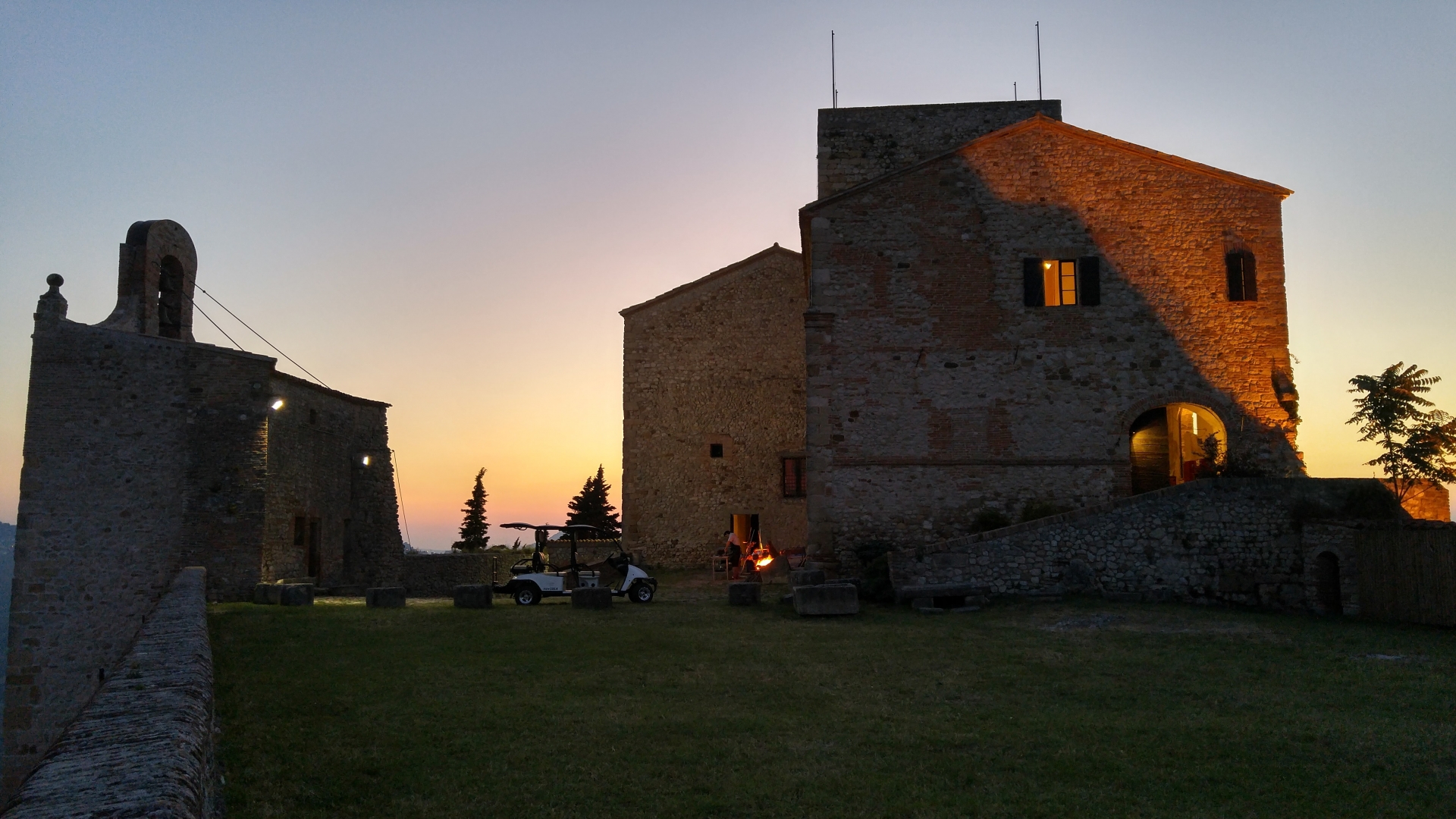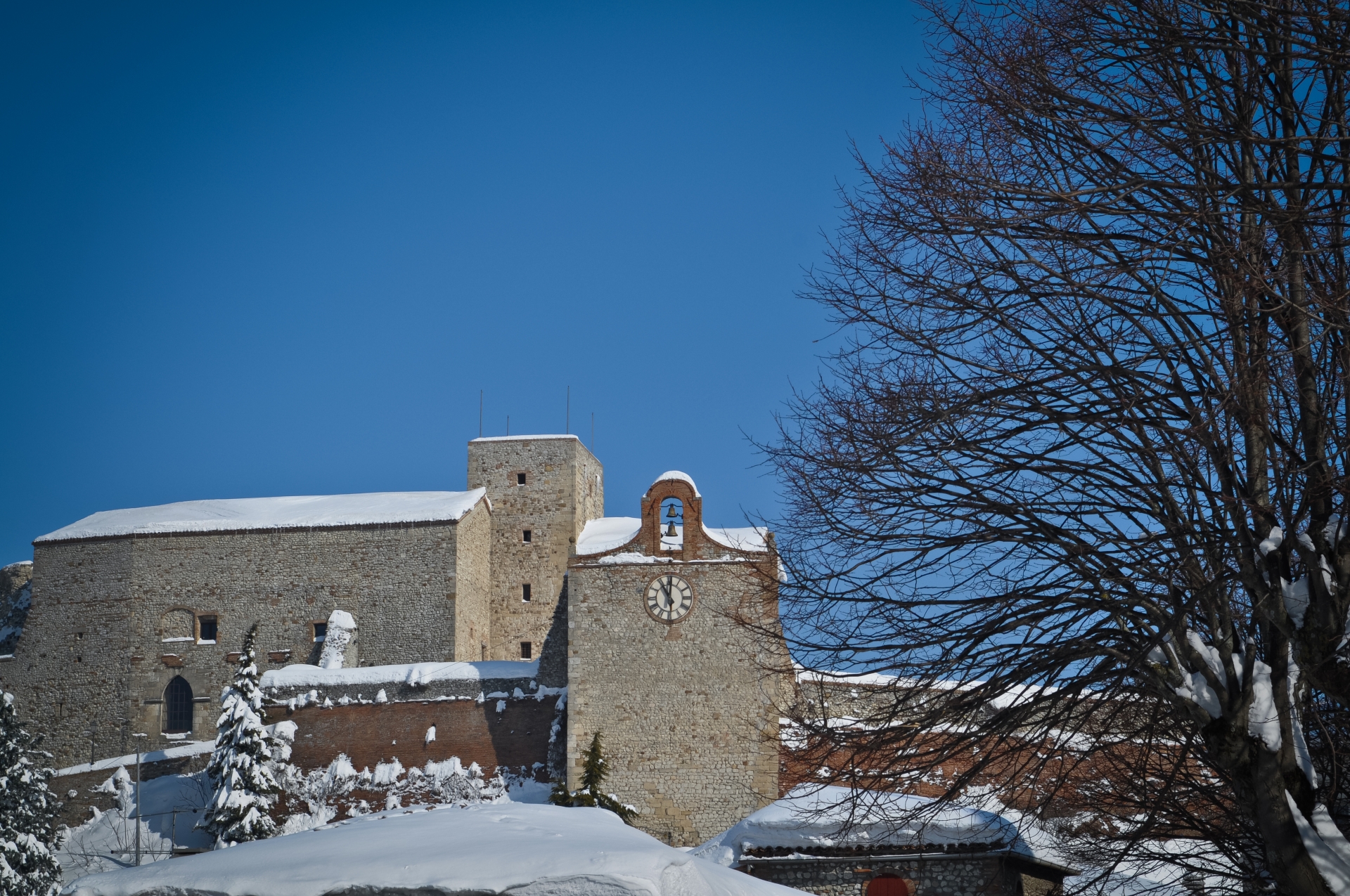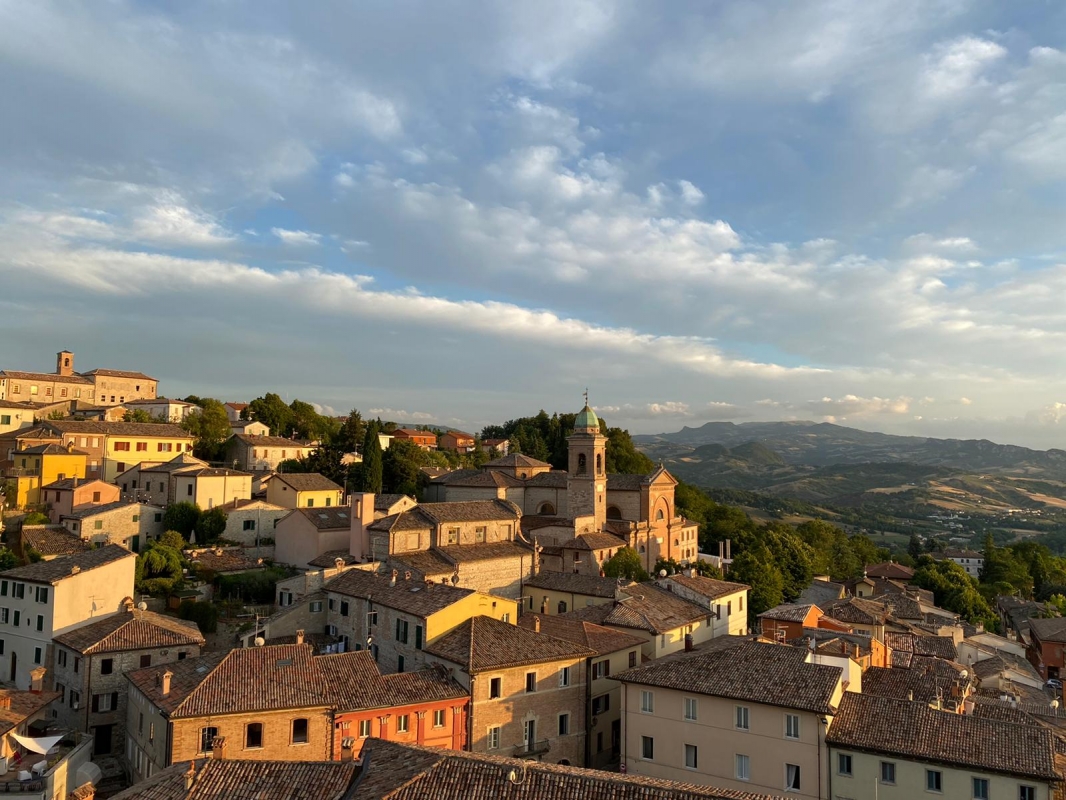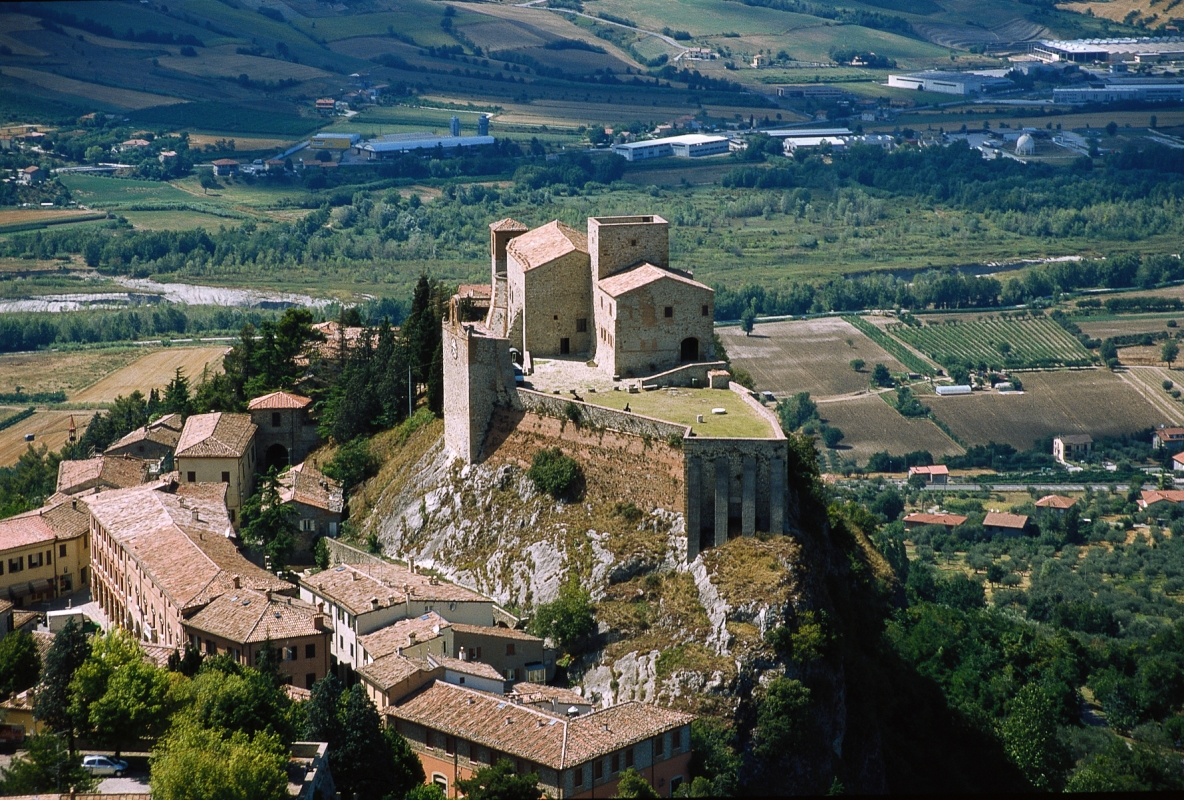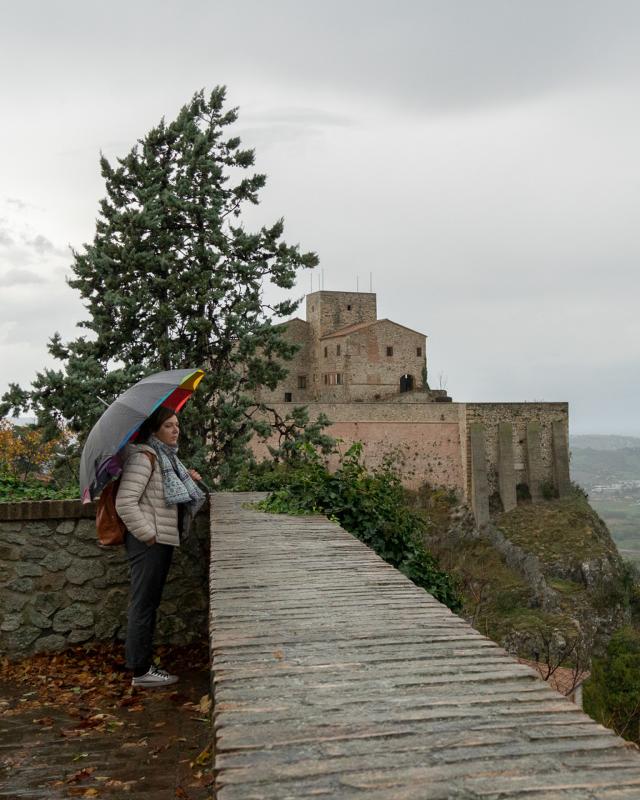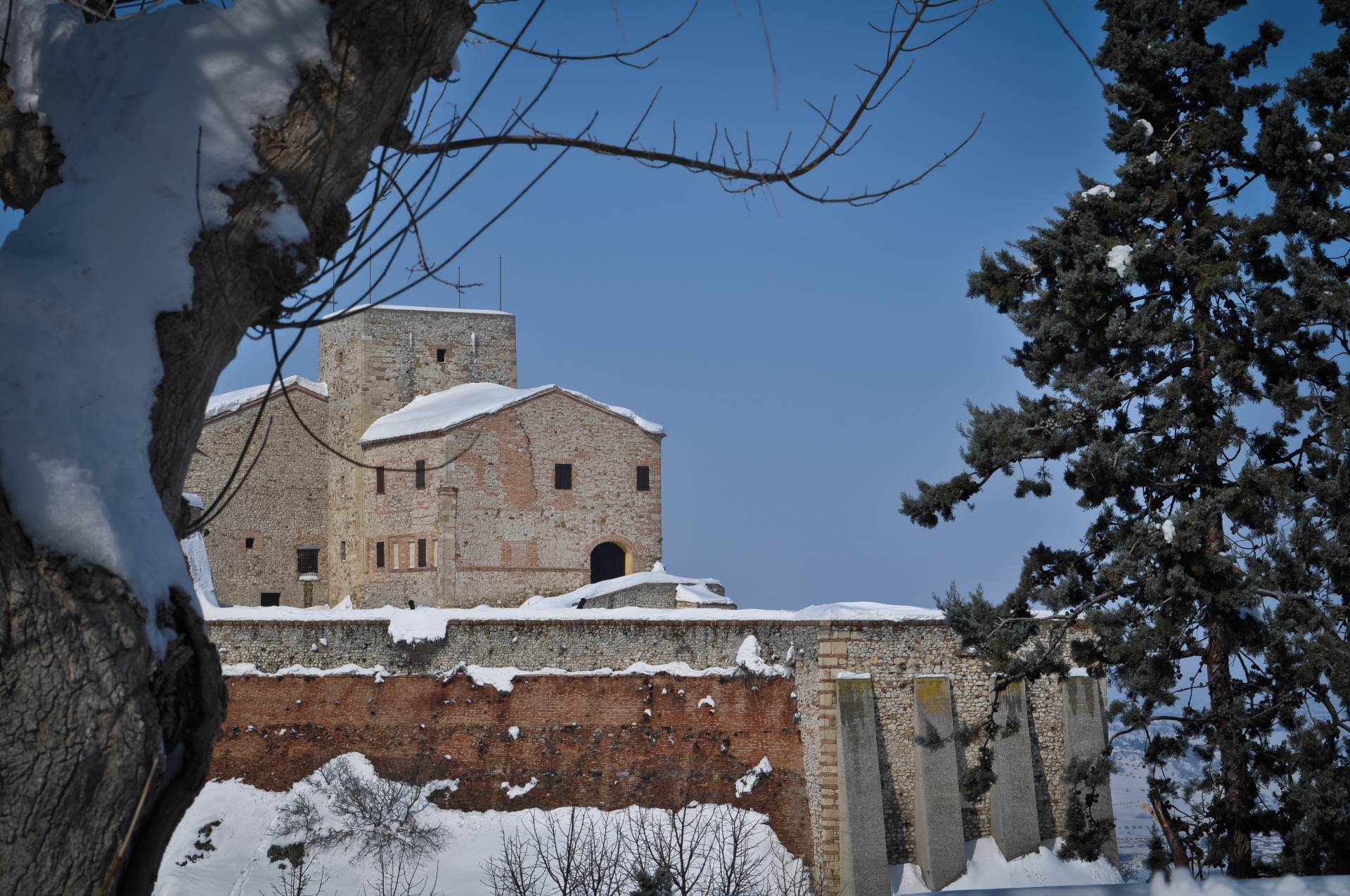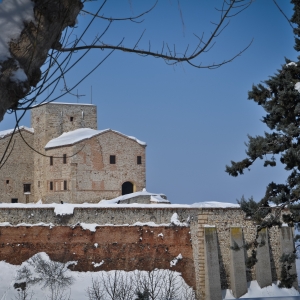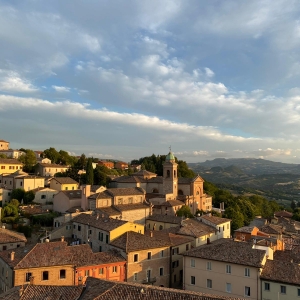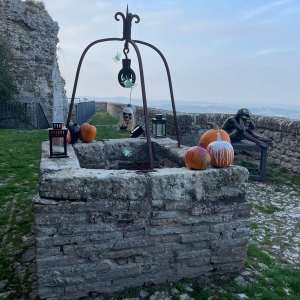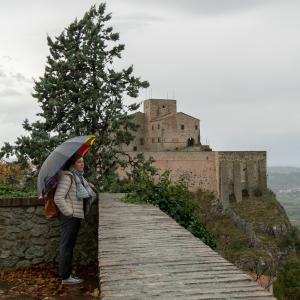Malatesta Rocca
This is one of the largest and best preserved Malatesta fortifications: the Malatesta Rocca of Verucchio, built by Sigismondo Malatesta in 1449; it offers a panorama that ranges from the Adriatic to the highest peaks of the Apennine ridge.
Inside, it preserves the impressive Malatesta family tree, the two courtyards, the halls of the Baronial Palace and the Mastio Tower from which you can admire the stupendous landscape of Valmarecchia.
The Fortress is easily recognizable by the characteristic watch tower where a large clock is set that marks the hours on the central Piazza Malatesta. Going along the cobbled Via della Rocca, you reach the gate that gives access to the town enclosed within the first ring of walls. After proceeding a few hundred meters uphill, you arrive at the foot of the Castle itself. A little further on, you enter the vertical garden.
The Castle has witnessed the overlapping of various architectural styles from the 12th to the 16th century. The fortress was in fact already owned by the Malatestas in 1197: The family held the town and the castle for at least three centuries. Inside the Rocca, in the Sala Magna, where a theater was located until 1700, you can now see an exhibition that illustrates the evolution of heraldic coats of arms throughout history.
The hamlet of Verucchio, located at the center of the important strategic system via which the Malatestas controlled the territory, was the birthplace of "il Mastin Vecchio" (the Old Mastiff) Malatesta of Verucchio, the progenitor known as "the centenary" who conquered Rimini in 1295, remembered by Dante in the Divine Comedy: "the old and new mastiff from Verrucchio, / who were bad jailors for Montagna, / there where they used to sharpen their teeth".
Verucchio was, in fact, a strategic garrison and fortress against the adverse rule of the Montefeltros.
It was the last great figure of the Malatestas, Sigismondo Pandolfo himself, who remodeled the Fortress and the ring of walls around the hamlet during the fifteenth century AD.
Through the centuries, the rooms of this fortress have undergone numerous transformations to adapt to the needs of successive courts, for example the court of Zenobio dei Medici, Ippolita Comnena, Leonello and Alberto Pio from Carpi.
La Rocca is venue for conferences, cultural events, shows and exhibitions.
A bit of history
The Malatesta Rocca is located in the upper part of Verucchio: also known as Rocca del Sasso (Fortress on the Rock) due to its position at the top of the rocky crag that dominates the whole area, it enjoys a remarkable state of conservation.
The first mention of the Castle of Verucchio dates back to 962 AD. when Otto I gave it to Ulderico; the lower part is built with perfectly matching squared stone ashlars, around which remains of more recent constructions are placed. The oldest part of the castle is the tower in the small courtyard.
It was fortified by Sigismondo Malatesta in 1449, but some excavations have revealed basements and other
structures dating back to the 12th century; the square stone tower is even older.
When the Malatestas were definitively defeated by the Montefeltros, the castle passed under the direct dominion of the Church, and it was entrusted a few years later to Cesare Borgia.
After the Venetian domination in 1503, the castle was entrusted in 1516 to Giovanni Alemanno Medici to whom the Pope had granted the coat of arms and the name of the Medici. Giovanni's successor, Count Camillo, was forced to sell the county to Zenobio, related to the Medicis and husband of Ippolita Comneno, daughter of Constantine, the prince of Macedonia, for 1650 Ecus.
Upon Zenobio's death, the county passed to his wife Ippolita: It was during those years that the most substantial restructuring of the building took place to make it more suitable for residential use. The period of Countess Ippolita, which lasted almost thirty years, is remembered as a time of peace and prosperity.
In 1532 Countess Ippolita married her second husband, Pio da Carpi, former lord of Meldola and Sarsina, and from their union Alberto Pio was born who, starting from 1580, became the fifth Duke of Verucchio.
It was Alberto Pio himself who eliminated the County under a pretext and placed Verucchio under the direct dominion of the Church, under which it remained except for brief periods, until the unification of Italy.
The rooms of this fortress have therefore undergone numerous transformations to adapt to the needs of the courts of Zenobio dei Medici, Ippolita Comnena, Leonello and Alberto Pio da Carpi, who had Verucchio as a fief from 1518 to 1580.
In 1975 an ancient trail was rebuilt, which constituted an emergency link with the territory.
